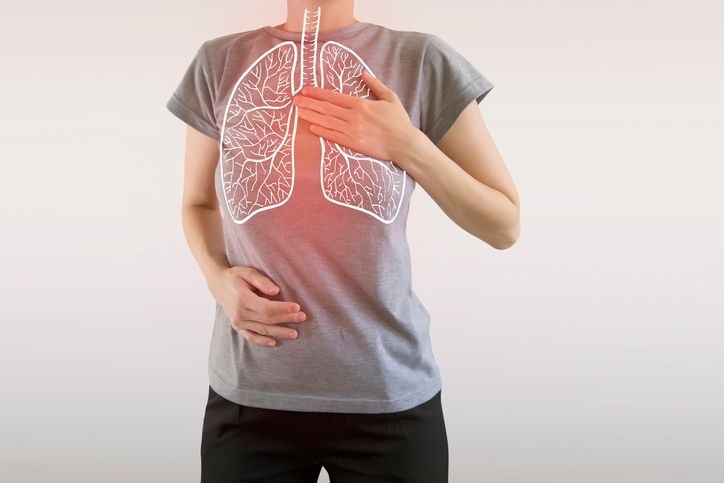Reverse paradoxical breathing: a technique to avoid?
Caution : You must consult your doctor for your health. This page presents only a personal and alternative point of view which should not be considered as an attempt to prescribe medicine.
Breathing takes place in two stages: air intake (inspiration) and air expulsion (expiration).
Although it is systematic, it is quite possible for man to exert an influence on his breathing.
This influence, when poorly executed, can give rise to unnatural movements, including reverse paradoxical breathing.

Understanding reverse paradoxical breathing
Before looking at the phenomenon of paradoxical reverse breathing, we must first look at the mechanism of breathing.
Respiration is a natural phenomenon which allows the oxygenation of the organs of the human body.
It ensures the renewal of air in the lungs and mobilizes the diaphragm.
This money plays a capital role.
In fact, from birth to death, it is estimated that the diaphragm would lift an average of 750 million times in a lifetime.
It ensures a physical separation of the heart and the lungs, viscera.
Breathing takes place in two distinct phases, namely inspiration and expiration.
During the first phase, the diaphragm rises and the rib cage expands, while on exhalation, the diaphragm sags and the rib cage retracts.
This phenomenon is reversed with paradoxical breathing.
In fact, with this form of breathing, the belly and the diaphragm retract during the inhalation of air.
On exhalation, there is rather swelling of the abdomen and compression of the rib cage.
The weakening of the diaphragm, the cause of paradoxical reverse breathing
Psychologically, the diaphragm is the only muscle that is actually mobilized during breathing.
Its contraction during inspiration creates a depression in the rib cage, which causes the phenomenon of inhalation of air, with the corollary of the swelling of the abdomen.
Unfortunately, it can happen that the diaphragm is weakened or blocked, and therefore unable to ensure the mechanics of breathing.
In this case, and by instinct of survival, the human body solicits the accessory muscles of respiration, in particular the sternocleidomastoid muscles, the scalenes and the intercostal muscles.
The latter are unable to exert any real negative pressure on the abdomen.
Consequently, during inspiration, it does not extend, while the thorax expands.
The phenomenon of paradoxical breathing thus occurs and is transformed into abnormal thoracic breathing.
Reverse paradoxical breathing for relaxation?
Some relaxation professionals suggest that their patients practice reverse paradoxical breathing.
According to them, this unnatural technique relaxes the diaphragm by stretching it upwards during inspiration.
With practice, the patient will gain in respiratory amplitude, while strengthening his abdominal muscles and intestines.
It would be an ideal practice to maintain a slim figure.
Moreover, this respiratory technique is presented as one of the most used by high level athletes.
In fact, the latter practice reverse paradoxical breathing during their weight training sessions in order to facilitate the development of their rib cage, while sheathing their diaphragm and their back.
Reverse paradoxical breathing, a risky breathing technique
Despite the benefits praised by the followers of reverse paradoxical breathing, it must be said that this mechanism remains abnormal.
As such, it has a significant impact on the human organism.
Indeed, by knowingly adopting this respiratory mode, less ventilation will be observed.
This implies that the lungs will receive a volume of air much lower than the ideal volume for an optimal supply of oxygen.
This weak ventilation will be accompanied by a weak respiratory amplitude, that is to say a more shallow and therefore less deep inspiration.
The combination of the two effects will lead to chronic hyperventilation.
The proponent of reverse paradoxical breathing will tend to breathe faster and faster and find themselves trapped in permanent emotional distress.
Which in short is far from promoting a state of general well-being.
Beyond this consequence, the breathing of such a person will tend to become an automatic gesture, over which he will lose all control.
Reverse breathing is an abnormal practice, since it goes against the grain of the normal respiratory process.
It can occur in situations where the diaphragm is weakened or blocked, and therefore unable to perform its role in the respiratory process.
While some recommend it as a method of relaxation, it is important to note that it carries risks for people who indulge in it.
The major risk is still to find oneself in a state of deep discomfort.
This technique should therefore be avoided.
In the event of involuntary reverse breathing, it is best to seek professional help to reverse the trend.
❤ The ultimate guide to breathing
Intermittent Breathing : Discover the method to quickly relieve your anxiety and chronic fatigue (positive effects from the first use).Read also :
Previous article : Holotropic breathing (rebirth): benefits and dangers?
Next article : Difficult and painful deep breathing: the yoga practitioner problem ?

